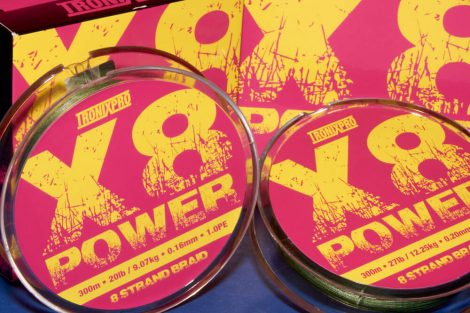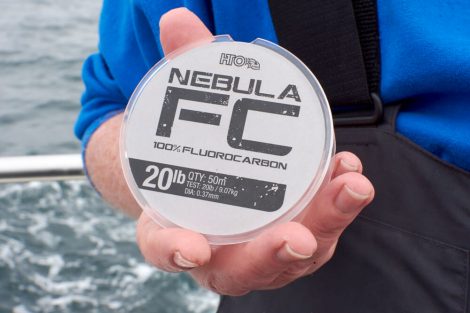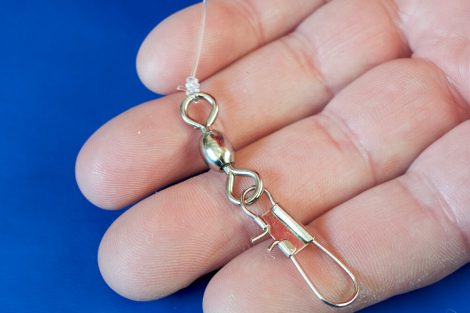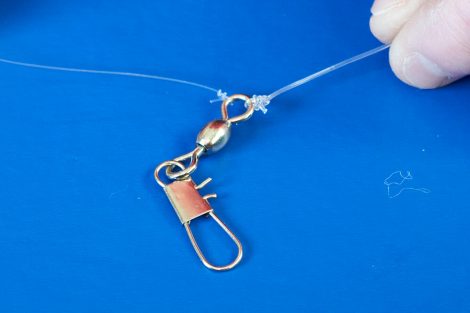Pollack are a hard fighting fish ideal for targeting on light tackle, especially with lures. They are famous for their crash-diving fight and average between 3 and 8lbs in weight, but with double figure fish relatively common in some areas.
Habitat
They range all around the UK and Ireland, and as far north as Iceland and Norway. They are more common on the south and west coasts, though some very big fish are occasionally taken from the deep-water wrecks in the North Sea.
They dwell on rocky reefs and can be taken in depths as shallow as 20-feet, but the better fish are in water more than 100-feet deep. They seek out rising rock pinnacles, steep sided rock ledges and generally rough, uneven ground, plus are found in thick kelp weed beds. The biggest fish reside in and around deep-water wrecks down to 500-feet, though most angling is in depths from 150-feet to 350-feet.
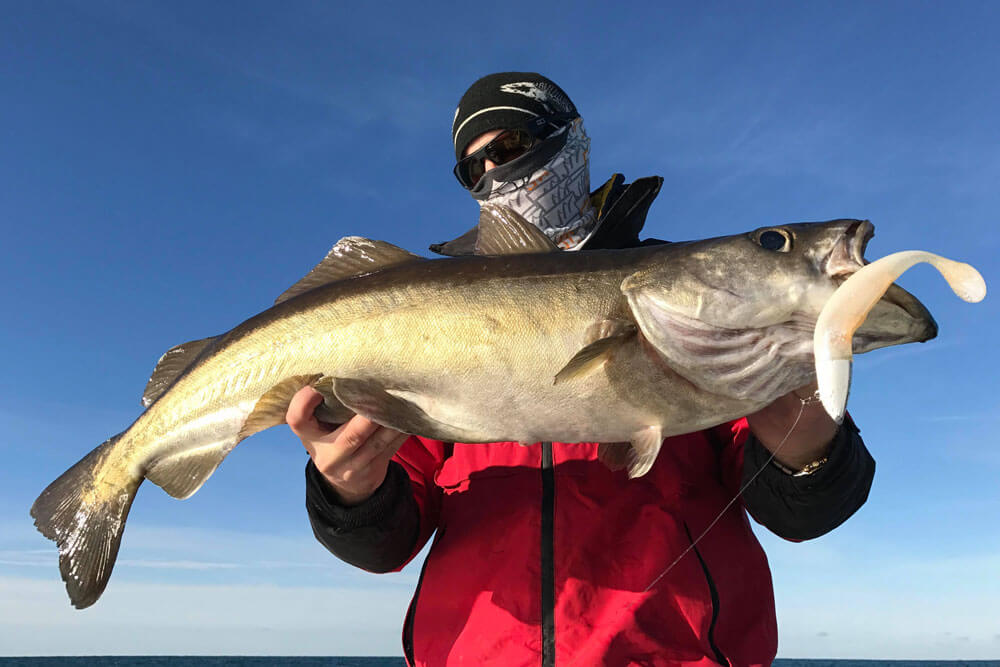
Weather and Tides
A period of rough weather will see the reef pollack thin out in number as they head out to deeper water, but they quickly return as seas start to settle. This effect is lessened in depths over 150-feet. They prefer settled seas with a low cloud base, though the deeper the water the less it matters. They feed best when the sea is clear and not carrying sediment after a blow.
Pollack will feed on all tides, but the speed of the boat drift governs that the smaller neap tides with less tidal flow are the best to fish as they give you longer over the target area, plus drifting much faster than 2-knots makes it difficult to fish effectively, especially in deeper water. In areas where the tide run is slow, then bigger tides will also produce.
The fish start to feed as the tide run picks up with the middle hours of the flood and ebb usually producing the most fish. Periods of slack water at high and low tide can generally be spells when little happens. Expect the fish to be up in the water column at slack water, but tight to the reef or wreck during the flowing tide.
Basic Tackle
If there is not too much tide run, a 12/20lb class boat rod around 7’6” to 8” is ideal matched to a multiplier reel holding around 300-yards of 30lb braid like our Tronixpro X8 Power Braid plus mono backing. If the tide run is faster, then look to a 20/30lb boat rod and in circumstances such as very deep water over wrecks, then a straight 30lb class rod may be required but with the same choice of reel and braid line. We prefer the Tronixpro Banzai Boat Range.
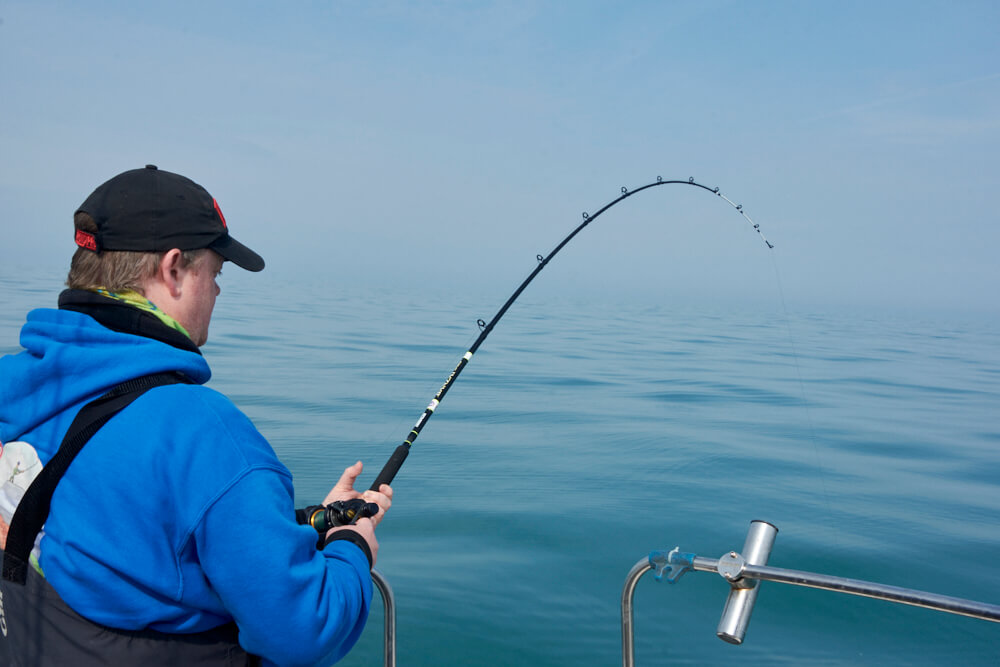
Adding a 20lb HTO Nebula FC Fluorocarbon leader about twice the length of the rod to the 12/20 and 15lb class outfits gives the braid some protection from contact with rocks and metal, plus the knot between the leader and braid acts as a deliberate weak link should the tackle get snagged saving the expensive braid. Use a 30lb leader on the 20/30lb class rod. The Fluorocarbon also stops the pollack seeing the braid line as it travels through the water.
For this blog, we are looking at conventional tackle required for boat pollack fishing. Some years ago, we wrote a blog on lighter tackle situations for Winter Pollack which gives you some tips on fishing lighter, it has been recently updated with newer tackle items and you can read it here.
Rigs
The best rig for working lures for pollack is what’s known as a Whitby Rig. To construct this, tie a Tronixpro Interlock Snap Swivel size 2/0 to the end of the leader. To the same swivel eye the leader is tied to, tie on 8-feet of 20lb HTO Nebula FC Fluorocarbon. This is the hook-length, and the lure is tied to the end of this. The weight goes in the snap link of the swivel. That’s all there is to it. It’s cheap, effective, and rarely tangles.
This rig works best with jig head lures such as sandeels and shads. If you want to make sure the lure and hook length has not tangled, as the weight is felt to hit the seabed, lift the rod tip sharply upwards and wind in 10-feet of line. This action, due to the weight of the lead head, pulls out any tangles in the hook length and sees the lure fish out cleanly behind the lead weight. Once this is done, release line until the lead weight hits the seabed again and begin to work the lure.
Successful Lures
Lures that imitate small baitfish such as sprat, whiting, poor cod and especially sandeels are all deadly for both reef and wreck pollack. The AXIA Mighty Eel in all sizes and colours is a firm favourite, as are the AXIA Mighty Minnows and the AXIA Tidal Minnow.
Carry different sizes with you as pollack can be choosy and become preoccupied with a specific size of fish they are feeding on. You need to imitate that to maximise your catch. The darker colours work well in water that is slightly coloured or when there is heavy cloud cover, with brighter colours doing well in clear seas and bright sunshine, even when fishing deep water.
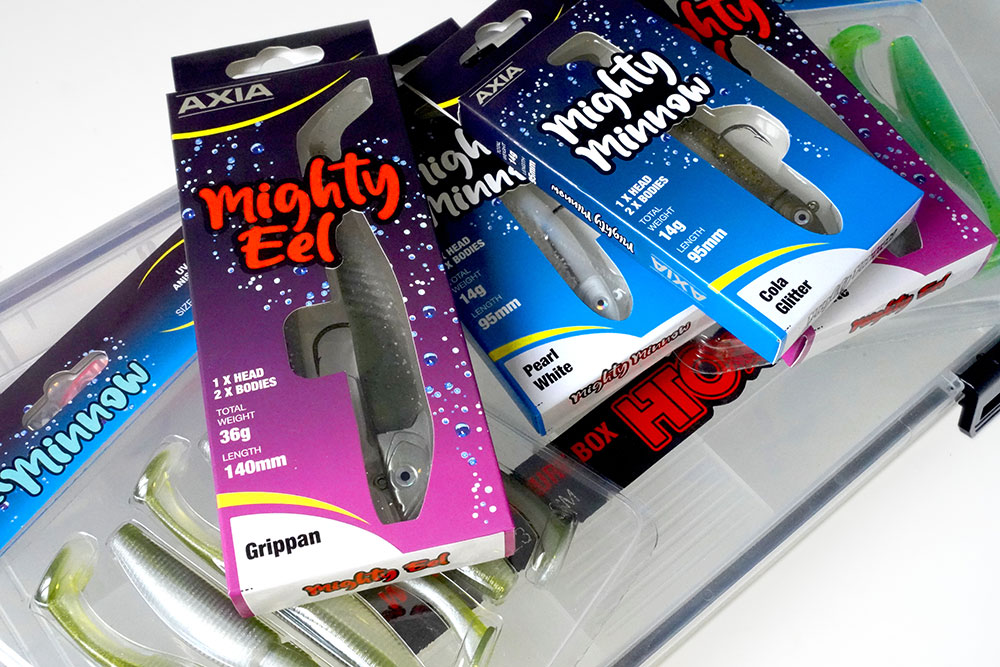
Method
For both reef and wreck pollack there are two ways to fish artificial lures.
The straight retrieve sees the weight and lure dropped to the bottom. When you feel the weight bump the seabed, lift the rod tip and start retrieving at a slow to medium pace. Keep note of the amount of line you retrieve and raise the lure up about 15-yards through the water column. The bulk of the fish will be tight to the reef and wreck, so coming up no more than 50-feet should find the level the fish are feeding at. Repeat this process, but either slow or speed up the retrieve rate until you find what the fish want on the day. If that doesn’t work, start changing the size and the colour of your lures.
The second method is known as hopping. This sees the hook length on the rig described shortened to just 4-feet. Drop the tackle until you feel the weight hit bottom. Instantly lift the rod tip up and retrieve 6 to 7-feet of line. This is just enough so that when the rod tip is raised the lure literally hops up and down just above the seabed. This is deadly for the bigger pollack. Again, change the size and colour of the lure until you get consistent takes.
You’ll need to also judge just how much lead weight you need to keep the line almost vertical. If the line goes streaming off at a steep angle, the chances are that you’ll pull the lure into the wreck and snag.
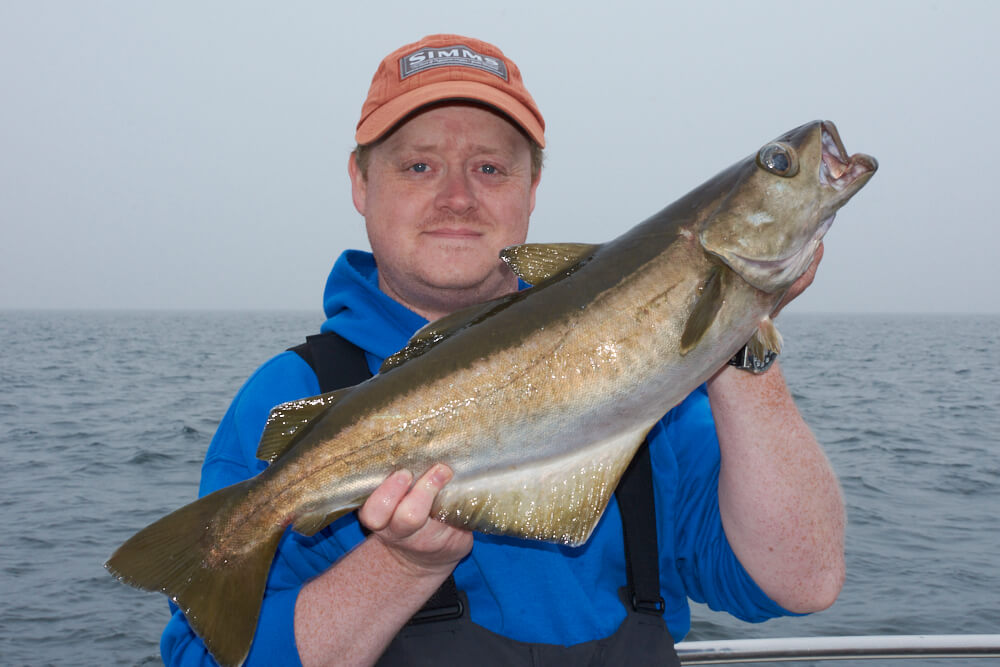
Pollack, as they suck in the lure, will be felt as a slowly increasing pressure on the rod tip. Do not stop winding in, keep retrieving until the rod tip pulls over to indicate the fish has fully taken in the lure and hooked itself. Expect a rapid crash dive. Try not to give too much line to the fish to avoid it reaching the wreck, but when it stops immediately start to work it by pumping the rod and retrieving line. Once you’ve got them about 30-feet up you’ve got them beat.
It's very important to listen to the skipper when drift fishing. He will shout out that you’re approaching the reef or wreck. This means you can on slower drifts, hold the lure on a tight line about 40-feet off the bottom, then drop it down to the seabed when the skipper says you’re closing in on the target ground. This helps you maximise your time over where the fish are, otherwise, you could be in mid retrieve and too high in the water column as you come to the wreck, and you’ll miss the bulk of the fish.
On very overcast days and especially towards dusk and dawn, the pollack will follow the baitfish well up in the water to more than half overall depth. Try some longer retrieves at this time if you’re not catching anything as the fish may be higher in the water.
Tackle You Need
Rods
Tronixpro Banzai Boat 6/12lb Class
Tronixpro Banzai Boat 12/20lb Class
Tronixpro Banzai Boat 20/30lb Class
Lines
Tronixpro X8 Power Braid
HTO FC Fluorocarbon
AXIA Fluorocarbon
Terminal Tackle
Tronixpro Interlock Snap Swivel


